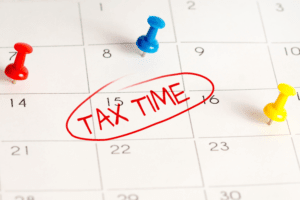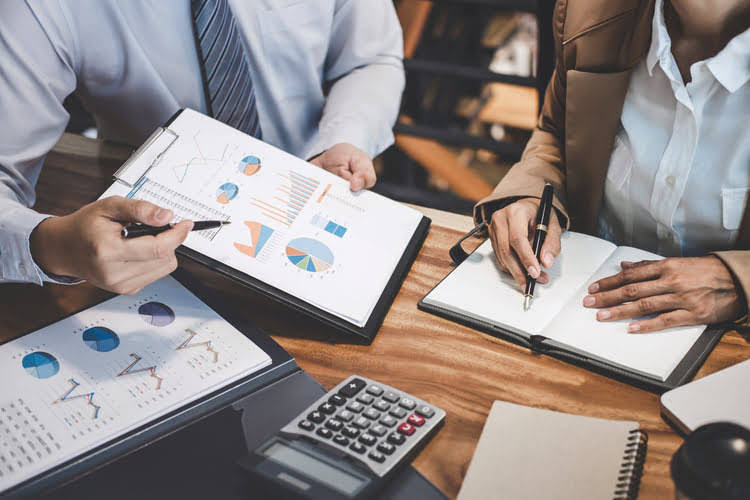Plan Inwestycyjny dla Europy umożliwił już wygenerowanie inwestycji o wartości €546.5 mld, w tym €21 mld w Polsce, i zapewnił wsparcie dla 1.4 mln przedsiębiorstw typu start-up i MŚP w całej Europie. Najnowsze dane EFIS z podziałem na sektory i kraje można znaleźć tutaj lub w dziale Najczęściej zadawane pytania. PlatformaInwestora.pl to serwis internetowy kojarzący użytkowników mających ciekawe oferty biznesowe i kapitałowe z inwestorami szukającymi sposobów ulokowania środków finansowych. Nasz serwis pomaga w zdobyciu kapitału, w znalezieniu wspólnika, finansowaniu start up’ów, sprzedaży udziałów, całych przedsiębiorstw oraz przedstawia ciekawe formy inwestowania. Portal PlatformaInwestora.pl dociera do szerokiego grona inwestorów zarówno polskich jak i zagranicznych, a ilość ofert branżowych stawia go w czołówce serwisów inwestycji kapitałowych. Nasi pracownicy aktywnie pomagają w redagowaniu ogłoszeń inwestycyjnych ponieważ misją serwisu PlatformaInwestora.pl jest realizacja celów biznesowych naszych kontrahentów oraz pomoc w zawarciu jak największej transakcji biznesowych za naszym pośrednictwem.
- „Fundusz będzie kontynuował sprawdzoną i skuteczną strategię CVI w zakresie inwestycji private debt w firmy z segmentu MŚP w wybranych krajach Europy Środkowej, przy wielkości pojedynczej inwestycji od 5 do 25 milionów euro.
- Spółka planuje także oferowanie nowych emisji funduszy publicznych, notowanych na Giełdzie Papierów Wartościowych.
- CVI zbudowało najbardziej doświadczony zespół inwestycyjny w obszarze długu korporacyjnego w Europie Środkowo-Wschodniej, co przekłada się zarówno na dostęp do projektów inwestycyjnych, jak i wyniki poszczególnych funduszy.
- Private debt to szybko rozwijająca się klasa aktywów z grupy inwestycji alternatywnych, polegająca na inwestowaniu w dług korporacyjny w transakcjach prywatnych.
- CVI zapewniło środki wiodącemu regionalnemu producentowi akumulatorów samochodowych na refinansowanie istniejącego zadłużenia.
- Najczęściej wykorzystują w tym celu instrument obligacji, których emisje kierowane są ekskluzywnie do funduszu.
Accession Capital Partners
- W 2020 roku CVI Dom Maklerski specjalizujący się w private debt zmodyfikował swój model biznesowy, poszerzając grono partnerów oraz kanały dystrybucji.
- Prosto na Twojego maila będziemy wysyłać skrót najważniejszych informacji ze świata finansów, powiadomienia o nowościach rynkowych, najnowsze oceny i raporty oraz codzienne notowania wybranych przez Ciebie funduszy inwestycyjnych.
- Środki zostały przeznaczone na zrefinansowanie rozbudowy jednej z inwestycji w regionie Morza Bałtyckiego .
- Jednocześnie, w porównaniu do inwestycji kapitałowej oczekiwane jest większe bezpieczeństwo, poprzez udostępnione zabezpieczenia oraz pierwszeństwo w spłacie przed inwestorami kapitałowymi.
- PlatformaInwestora.pl to serwis internetowy kojarzący użytkowników mających ciekawe oferty biznesowe i kapitałowe z inwestorami szukającymi sposobów ulokowania środków finansowych.
CVI zapewniło środki wiodącemu regionalnemu producentowi akumulatorów samochodowych na refinansowanie istniejącego zadłużenia. CVI zapewniło finansowanie dłużne większościowemu udziałowcowi producenta jachtów z Europy Środkowo-Wschodniej. Od momentu Czy Epsilon NET SA (ATH: EPSIL) uruchomienia fundusz zrealizował już 12 inwestycji, a kolejne dwie są planowane do zrealizowania w ciągu miesiąca.
Inbank podpisuje umowę z Grupą EBI i zwiększa zaangażowanie w „zielone finansowanie” w Polsce
„Europa Środkowa oferuje wyjątkowe możliwości w obszarze private debt, rynek wciąż dynamicznie rośnie, a jednocześnie nie jest tak konkurencyjny jak w innych regionach. Zamierzamy w pełni wykorzystać naszą platformę, w tym największy zespół inwestycyjny zajmujący się private debt w Europie Środkowej, który liczy już 20 profesjonalistów. Fundusz pozwala nam kontynuować wspieranie dobrze funkcjonujących firm z sektora MŚP, zapewniając jednocześnie szybkie zaangażowanie kapitału oraz atrakcyjne, skorygowane o ryzyko zwroty dla naszych inwestorów” – dodał Radoslav Tausinger, Partner w CVI.
Coal Energy wyemituje obligacje zamienne na akcje za 14,5 mln zł
Założycielem i Partnerem Zarządzającym w CVI, odpowiedzialnym za zarządzanie portfelami funduszy jest Rafał Lis, doradca inwestycyjny z licencją nr 2, z ogromnym doświadczeniem w zakresie zarządzania aktywami w Polsce i na rynkach zagranicznych, w międzynarodowych instytucjach finansowych. CVI Dom Maklerski (CVI) z siedzibą w Polsce jest największym zarządzającym funduszy Trading the British Pound: GBP/USD (GBP=X) – Technicals to Know private debt w Europie Środkowej, z zarządzanymi aktywami o wartości blisko 1 mld EUR. CVI zawarł ponad 600 prywatnych transakcji dłużnych, inwestując ponad 2,3 mld EUR w spółki o małej i średniej kapitalizacji.
Większość funduszy zarządzanych przez CVI bezpośrednio finansuje przedsiębiorstwa poprzez nabywanie obligacji i udzielając pożyczek, które zapewniają wysoką rentowność skorygowaną o ryzyko. CVI jako pierwszy polski (a także pierwszy środkowoeuropejski) zarządzający funduszami został wyróżniony przez magazyn „Private Debt Investor” nagrodą Lower Mid-Market Lender of the Year, Europe 2018. CVI jest sygnatariuszem wspieranych przez Organizację Narodów Zjednoczonych Zasad Odpowiedzialnego Inwestowania (UN-PRI). Do tej pory CVI ma na koncie ponad 600 inwestycji typu private debt o łącznej wartości przekraczającej 2,3 mld EUR, dzięki czemu wsparcie uzyskało ponad 250 przedsiębiorstw z Europy Środkowej.
Movens Fund 2 wystartował. EBOiR i PFR Ventures wśród inwestorów
CVI współpracuje w tym zakresie z szeregiem renomowanych partnerów w postaci Towarzystw Funduszy Inwestycyjnych, domów maklerskich, depozytariuszy, doradców prawnych czy audytorów. Dodatkowo, CVI jest członkiem kilku stowarzyszeń branżowych w Polsce i regionie, gdzie stara się popularyzować ideę finansowania projektów przez fundusze private debt oraz możliwości inwestowania środków w tej klasie aktywów. W 2020 roku CVI Dom Maklerski specjalizujący się w private debt zmodyfikował swój model biznesowy, poszerzając grono partnerów oraz kanały dystrybucji. Firma zarządza portfelami sześciu Korzyści w handlu na rynku Forex polskich FIZ-ów o różnych poziomach ryzyka na zlecenie Noble Funds TFI, a od zeszłego roku współpracuje z Ipopema TFI w zakresie zarządzania portfelem funduszu CVI Ipopema Real Estate Debt FIZAN, finansującego podmioty działające na rynku nieruchomości. Spółka zarządza także funduszami luksemburskimi w ramach parasola CVI SICAV SIF, które zgromadziły ponad 130 mln zł na koniec roku 2020 roku.
Google na celowniku brytyjskiego regulatora rynku. Nowe regulacje i zmiany w algorytmach
Umożliwiają one inwestycje w private debt w regionie Europy Środkowo-Wschodniej inwestorom z zagranicy, ale dostępne także dla inwestorów z Polski. Pierwszy z nich CVI CEE JUNIOR DEBT przyniósł inwestorom 7,64% zysku w 2020 roku, a CVI CEE DIRECT LENDING 3,82%. Fundusze typu mezzanine finansują bardziej ryzykowne projekty o charakterze dłużnym, któremu może towarzyszyć element kapitałowy. Bardziej ryzykowny charakter w porównaniu do zwykłych funduszy private debt powinien przekładać się na wyższą stopę zwrotu, przy czym oczekiwana jest także większa zmienność tego typu instrumentów.
CVI zbudowało najbardziej doświadczony zespół inwestycyjny w obszarze długu korporacyjnego w Europie Środkowo-Wschodniej, co przekłada się zarówno na dostęp do projektów inwestycyjnych, jak i wyniki poszczególnych funduszy. Prosto na Twojego maila będziemy wysyłać skrót najważniejszych informacji ze świata finansów, powiadomienia o nowościach rynkowych, najnowsze oceny i raporty oraz codzienne notowania wybranych przez Ciebie funduszy inwestycyjnych. Do tej pory CVI zrealizowało ponad 700 inwestycji private debt, angażując kapitał o łącznej wartości przekraczającej 3 miliardy euro i wspierając ponad 300 firm w Europie Środkowej. Z powodu pandemii, która znacząco wpłynęła na rynek finansowy oraz zmieniła oczekiwania inwestorów, którzy są gotowi zainwestować swoje środki w tę klasę aktywów.
Chiny luzują zasady importu złota. Co to znaczy dla rynku?
Europejski Fundusz na rzecz Inwestycji Strategicznych (EFIS) jest głównym filarem unijnego finansowania i wsparcia inwestycyjnego, a w 2020 r. Kierunek jego działalności uległ znacznej zmianie, aby wspomóc unijne przedsiębiorstwa dotknięte kryzysem Covid-19. W ramach programu pożyczek prywatnych EFIS dokonywane są znaczące inwestycje w fundusze, które zapewniają alternatywne, elastyczne i dostosowane do potrzeb finansowanie dłużne dla firm. Jego głównym zadaniem jest wspieranie europejskich mikroprzedsiębiorstw oraz małych i średnich przedsiębiorstw (MŚP) poprzez ułatwienie im dostępu do finansowania. EFI tworzy i realizuje projekty w zakresie kapitału wysokiego ryzyka i kapitału wzrostu, gwarancji oraz instrumentów mikrofinansowych, które są przeznaczone dla tego segmentu rynku.
CVI Dom Maklerski (CVI) jest niezależną firmą inwestycyjną kontynuującą działalność Credit Value Investments, lidera pozabankowego finansowania dłużnego dla przedsiębiorstw w Polsce i regionie Europy Środkowo-Wschodniej. Zespół CVI to specjaliści o różnorodnym doświadczeniu zawodowym zdobytym w funduszach inwestycyjnych, bankach korporacyjnych i inwestycyjnych, funduszach private equity, doradztwie transakcyjnym, consultingu strategicznym i zarządzaniu operacyjnym. Obecnie CVI zarządza aktywami o łącznej wartości 5,6 miliarda zł w ramach siedmiu funduszy inwestycyjnych zamkniętych.
Oprócz oferty dla inwestorów instytucjonalnych, CVI zapowiedziało także rozwój oferty dla klientów indywidualnych oraz korporacyjnych w Polsce. Spółka planuje także oferowanie nowych emisji funduszy publicznych, notowanych na Giełdzie Papierów Wartościowych. Byłyby to na rynku pierwsze tego typu oferty w modelu private debt, dostępne dla prawdziwie szerokiego kręgu inwestorów. „Fundusz będzie kontynuował sprawdzoną i skuteczną strategię CVI w zakresie inwestycji private debt w firmy z segmentu MŚP w wybranych krajach Europy Środkowej, przy wielkości pojedynczej inwestycji od 5 do 25 milionów euro. Fundusz spełnia wymogi Artykułu 8, co potwierdza nasze zaangażowanie we wdrażanie polityk ESG w procesie inwestycyjnym” – skomentował Marcin Leja, Partner w CVI. W pierwszym zamknięciu wzięli też udział inwestorzy instytucjonalni oraz inwestorzy typu family office.










